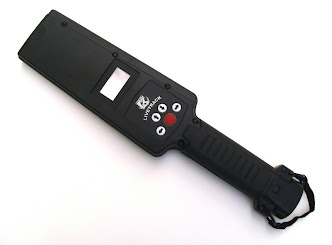Cattle Ear Tags: The Correct Way to Tag Cattle
Tagging is an important part of animal identification, but must be done properly. Tagging an animal is very similar to a human getting their ears’ pierced. Learn how to properly tag your animals and maintain proper care afterwards.
Figure 1. Proper tag placement location.
Figure 2. Visual panel, or male portion of the tag.
Figure 3. EID button, or female portion of the tag.
Figure 4. Proper placement of a tag in the tag applicator.
Proper Steps to Livestock Tagging
1. Properly secure the animal to apply tag. Movement of the animal’s head could create an undesirable situation to appropriately apply the ear tag. This could cause injury to the person or livestock, or improper tagging of the animal. The following immobilization suggestions work best, depending on species:
• Cattle: Chute with a head gate, halter and/or nose lead.
• Swine: Confine in a small pen, hog boards to restrict movement, or use of a hog snare to completely secure the hog.
• Sheep & Goats: Proper hand grip of animal’s head to restrict movement.
2. Identify the tagging site on the animal’s ear.
• Tags should be applied in the middle third of the ear between the upper and lower ribs (Figure 1).
• It is important, when using electronic identification (EID) tags to apply the tag with the visual panel, male portion (Figure 2), of the tag on the outside back of the ear with the EID button, female portion (Figure 3), of the tag on the inside of the ear.
3. Proper hygiene and cleanliness during the tagging process is necessary to reduce the risk of infection. Use rubbing alcohol or a disinfectant solution to clean the jaw of the applicator. Also, clean the tagging site of the animal’s ear.
4. Place each half of the tag onto the applicator. The stud must be inserted completely onto the applicator pin and the panel/button portion placed under the opposite clip (Figure 4).
5. Before tagging the animal, check alignment of the tagger by closing the jaw of the applicator to the point where the two halves meet; the stud should be centered with the hole (Figure 5).
6. Position the applicator in the identified tagging site on the animal’s ear (Figure 6). Firmly close the applicator in a fast manner and release.
7. Examine the tag to verify it is correctly, comfortably, and securely positioned. Record necessary data on the animal.
8. Once the animal has been tagged, proper care must be taken to ensure the animal stays healthy. Daily topical application of hydrogen peroxide directly to the ear and ear tag puncture for five to seven days following the tag application will assist in preventing infection. Additional topical application of hydrogen peroxide to the ear in the following weeks is recommended until the ear is completely healed. If a serious infection occurs, consult your veterinarian for assistance and recommendations for treatment.
Figure 5. Proper tag alignment before tagging.
Figure 6. Correct and incorrect tagging sites.
Figure 7. Correct applicator pin. Figure 8. Bent applicator pin.
Figure 9. Correct matching female and male portion.
Tagging Precautions
1. Tags placed too far outside of the recommended position are prone to snagging and may be easily torn out.
2. Tags placed too far inside of the recommended position may cause pinching and/or necrosis.
3. Inspect the applicator pin to ensure the tip is in good condition (Figure 7). If the tip is bent or broken, insert replacement pin (Figure 8).
4. Check alignment by closing the jaws of the applicator
to the point where the two tag halves meet; the stud should be centered within the button hole.
5. Note that when using EID tags in Oklahoma, the number printed on the visual panel tag (male portion) should correspond and match (Figure 9) with the 15-digit number on the electronic tag button (female portion). There should be limited opportunity for error because they are nested or stored in the same package.
Source: Chris Richards and Rusty Gosz, Oklahoma State University Extension














0 comments:
Post a Comment